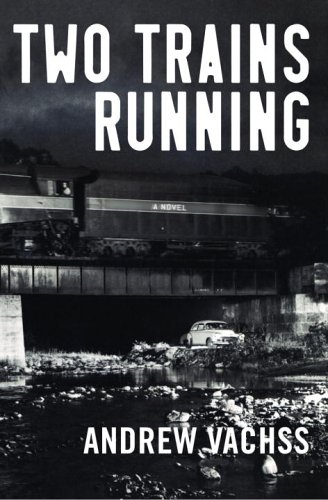Two Trains Running
I was mildly disappointed with Andrew Vachss’ sprawling new novel; I had read several of the author’s well-known, gritty Burke series, and their tone always made me think that he would excel at a noir novel set in the 1940s or 1950s. When taken individually and consolidated, the numerous subplots in Two Trains Running are suspenseful and engrossing (I gave up trying to count them), but Vachss’ choice of jarringly short, third-person chapters detracts—and distracts—from the city-wide action story he attempts to create.
The novel is set in 1959 in Locke City, a town under the thumb of Royal Beaumont (a man alternately twisted, pitiable, generous, and villainous) and his sly sister/lover Cynthia. A man who calls himself Walker Dett arrives in Beaumont’s town just as it is set to explode: multiple groups are planning to reclaim or stake out turf, including the Irish mob, the New York mafia, a group of African-American militants, white supremacists, and youth gangs. Who is Walker, and what is his agenda in this stew of political intrigue and violence? The number of characters is vast; many of those in the various gangs seem frustratingly similar, but those who transcend the gang plots (like Dett, Beaumont, the waitress-with-a-heart-of-gold Tussy, elevator man Moses, and cop Sherman Layne) are arresting and memorable.
Vachss date- and time-stamps his chapters, most of which are extremely short; the reader has the sense of observing events all over the city in real-time. Unfortunately, the chapters are often so brief that they yank the reader’s attention, to the point that it prevents the reader from becoming absorbed in any of the numerous tales that Vachss wants to tell. In such a case, the third-person narrative only serves to distance us further from the action. Not bad, but not Vachss’s best.










